HEALTH
Protein Bagels: A Nutritious Twist on a Classic Favorite
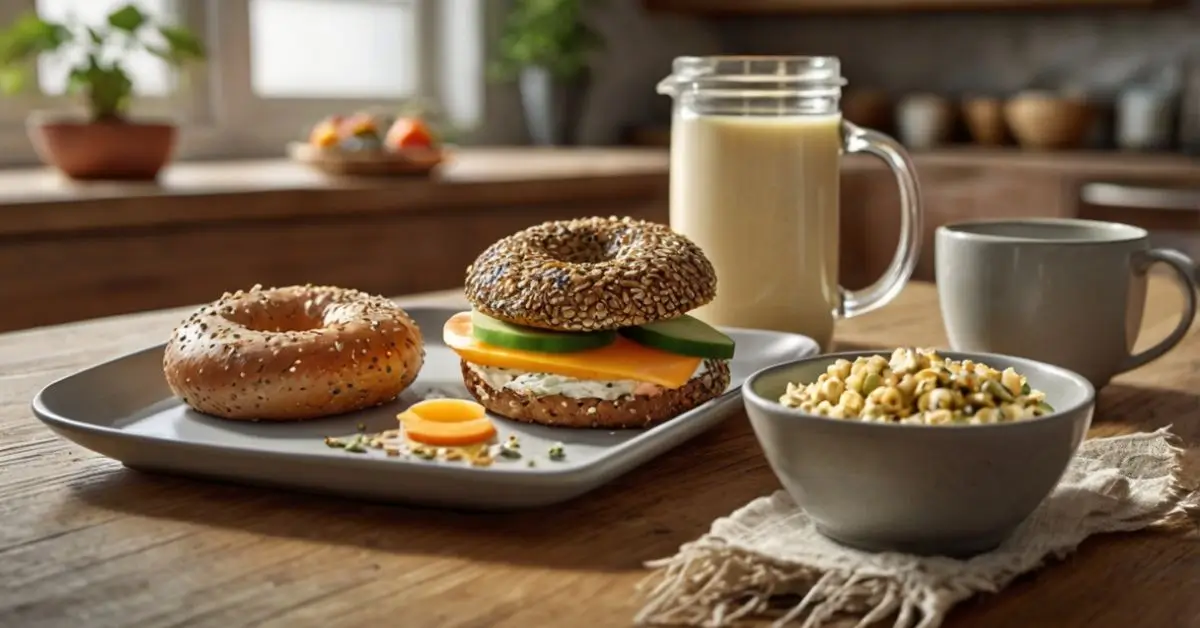
Protein bagels have become a top pick among fitness enthusiasts, health-conscious eaters, and busy professionals. These high-protein alternatives to traditional bagels provide a delicious way to boost your daily nutrient intake without sacrificing flavor or convenience. Whether you’re on a muscle-building journey, managing weight, or just looking for better breakfast options, protein bagels are a smart and satisfying choice.
What Are Protein Bagels?
Unlike the standard variety, which is often high in refined carbs and low in nutrients, these fortified bagels contain significant amounts of protein—ranging from 10 to 25 grams per serving. The protein typically comes from sources like whey isolate, almond flour, or chickpea flour, all blended to give the same chewy satisfaction of a regular bagel but with much-improved nutritional value.
Nutritional Benefits of High-Protein Bagels
Supports Lean Muscle Development
Protein plays a vital role in muscle repair and growth. Including bagels made with protein in your post-workout meals can accelerate recovery and enhance strength gains.
Keeps You Full Longer
Protein-dense meals help manage hunger hormones and delay the return of appetite. Eating a breakfast that includes a high-protein bagel can help you feel full until lunchtime.
Aids in Weight Management
These bagels not only curb appetite but also support metabolic health. Their lower carbohydrate content and increased fiber make them a great option for those trying to lose weight or maintain a healthy lifestyle.
Convenient for Busy Lifestyles
Quick to toast and easy to pack, protein-rich bagels are ideal for on-the-go meals. Whether you’re commuting, traveling, or meal-prepping, they’re a reliable nutritional choice.
Comparison Table: Protein Bagels vs. Regular Bagels
| Feature | High-Protein Bagel | Traditional Bagel |
| Protein Content | 15–25g | 5–9g |
| Caloric Value | 180–280 | 250–350 |
| Carb Content | Lower (Whole grain or almond) | Higher (Refined flour) |
| Fiber Amount | Moderate to High | Low |
| Satiety Level | High | Moderate |
| Digestive Impact | Lower Glycemic Index | Higher Glycemic Index |
Creative Ways to Enjoy a Protein Bagel
The versatility of these bagels makes them suitable for every meal. You can go savory or sweet depending on your preferences:
Morning Fuel
- Scrambled eggs and spinach
- Avocado slices with chili flakes
- Smoked salmon with low-fat cream cheese
Post-Workout Power Meal
- Grilled turkey breast and tomato
- Cottage cheese and pineapple
- Vegan tofu with almond butter
Quick Lunch or Dinner
- Chicken and pesto sandwich
- Hummus with roasted veggies
- Egg salad with spinach
These options not only maximize nutrition but also taste great and support your health goals.
Who Should Consider Adding These Bagels to Their Diet?
High-protein bagels can benefit almost anyone, but they are especially useful for:
- Athletes & Gym Goers – Great for muscle repair and energy
- Weight Watchers – Supports appetite control
- Office Workers – A portable, filling snack
- Vegans & Vegetarians – Many brands offer plant-based protein versions
- People with Blood Sugar Concerns – Helps stabilize insulin levels
Always review the ingredient list to match the product with your dietary needs, especially if you’re avoiding gluten or animal products.
Choosing the Right Product
Not all protein-enriched bagels are created equal. Here are a few tips for selecting the best ones:
- Protein Amount – Look for at least 10g per serving
- Natural Ingredients – Avoid artificial preservatives and sugars
- Sugar Content – Prefer options with less than 5g per serving
- Diet Suitability – Check for gluten-free, keto, or vegan labels
- Fiber Boost – Higher fiber helps digestion and satiety
Reading nutritional labels and customer reviews can go a long way in finding the best product for your goals.
Make Your Own High-Protein Bagels at Home
If you prefer full control over your food, try baking your own:
Ingredients:
- 1 cup Greek yogurt
- 1 cup almond flour
- 1 egg
- 1 scoop protein powder (unflavored or vanilla)
- 1 tbsp baking powder
- Optional: sesame seeds, garlic powder
Steps:
- Preheat oven to 375°F (190°C).
- Mix all ingredients into a dough.
- Shape into bagels.
- Place on a baking tray.
- Bake for 25–30 minutes until golden.
Homemade versions can be customized to fit keto, paleo, or vegetarian diets.
Expert Opinions on Protein-Enriched Bagels
Nutritionists and fitness coaches support incorporating protein-heavy meals into everyday routines.
“High-protein bagels can be a game-changer for people trying to control appetite and improve muscle tone,” notes one sports dietitian.
Many trainers recommend them for post-gym meals because they deliver nutrients fast and help refuel the body.
Market Demand and Future Innovations
As more people move toward protein-rich diets, these bagels have expanded from niche to mainstream. Expect to see:
- New plant-based variants
- Probiotic-infused versions
- Enhanced flavors without sugar
With health trends steering toward functional foods, this product is likely to remain a market favorite.
Conclusion
Protein bagels are more than a fitness fad—they’re a modern solution to a balanced diet. Offering a nutritious, satisfying, and versatile option, these bagels support everything from weight management to muscle recovery. By integrating this simple yet powerful food into your routine, you can elevate your nutrition without complicating your schedule. Whether you’re grabbing a quick breakfast or building a high-protein sandwich, a quality bagel like this can help you meet your goals while still enjoying your meals.
FAQs
What are protein bagels made of?
They usually contain ingredients like whey protein, almond flour, and Greek yogurt, blended to boost protein content.
Can I eat protein bagels on a weight-loss diet?
Yes, their high protein and fiber content help with appetite control and stable energy levels.
Are these bagels gluten-free?
Some varieties are gluten-free, especially those using almond or chickpea flour. Always check the label.
Do they taste different from regular bagels?
They have a slightly denser texture and a nutty or hearty flavor depending on ingredients, but are generally tasty and satisfying.
Are they suitable for vegans?
Yes, many plant-based versions use ingredients like pea protein and flaxseed.
How do I store them?
Keep them in an airtight container at room temperature for up to 3 days or freeze them for longer shelf life.
HEALTH
What Does Soringue Mean in English? Simple Guide
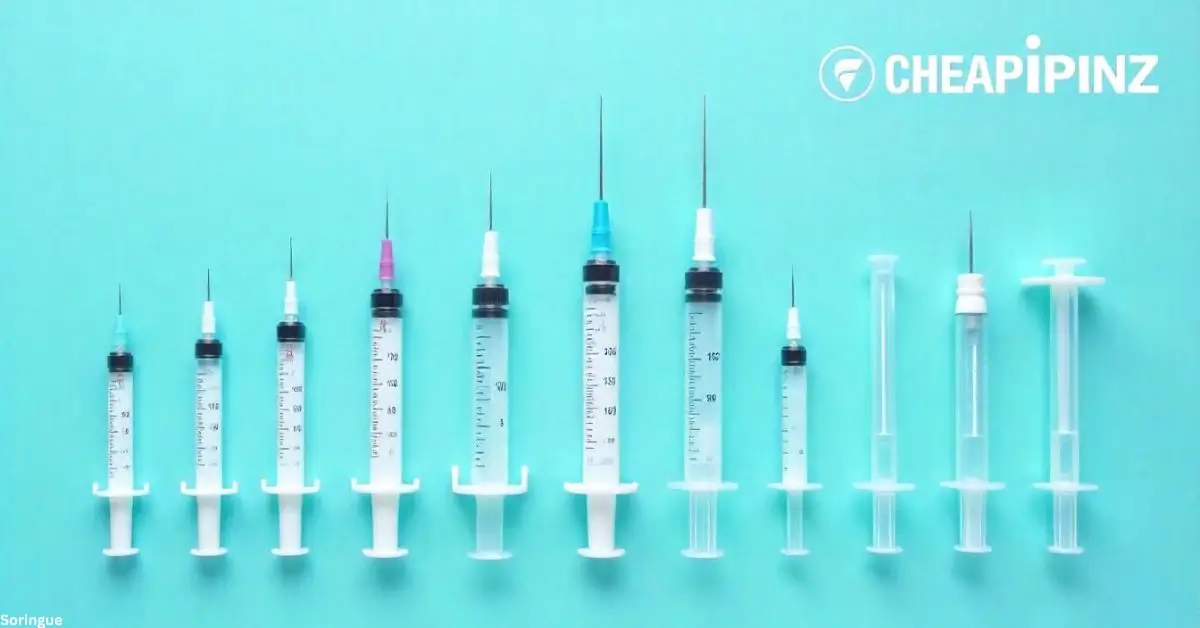
If you’ve ever come across the word soringue in a medical context, you probably wondered if it means the same thing as a syringe. Here’s the truth, it’s a variation of the French and Spanish word for syringe, referring to the same medical injection tool. That simple confusion can create serious mistakes in nursing notes, pharmacy practice, and even patient instructions.
According to the World Health Organization, over 16 billion medical injections are given worldwide each year yet many students and travelers get stuck on basic terminology. The French dictionary Larousse lists seringue as the official spelling, while in some texts, “soringue” appears as a variant or mistranslation. Dr. Henry Gray, a medical linguist, notes that the word is “a lexical cousin to syringe, not a different instrument.
Explore More:
Quick Answer
Soringue means syringe in French and Spanish medical contexts, describing the same injection device used in hospitals and pharmacies. The word is often a misspelling or variant of seringue in French, but it always refers to the tool that delivers liquid medicine through a needle.
What Does Soringue Mean in English?
The term soringue translates directly to syringe. It is not a new tool or a different instrument. For English-speaking medical students, the safest way to remember this is:
- Soringue = Syringe (same tool, different spelling).
- It can appear in French or Spanish hospital documents.
- Always linked to injection practice, not diagnosis or surgery.
Key Intake: It’s the foreign-language word for syringe.
Is Soringue the Same as Syringe?
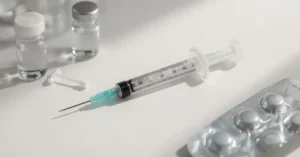
Yes. In healthcare, both terms describe the clear barrel with a plunger that holds medicine for injection. The difference is only linguistic, not functional.
Think of it like this:
- English: syringe
- French: seringue (variant: soringue)
- Spanish: jeringa (sometimes misread as soringue in translations)
Key takeaway: If you see this word in a textbook, hospital chart, or pharmacy label, treat it as syringe.
Where Is the Word Used Commonly?
You’ll encounter it mostly in:
- France → as a rare variant spelling of seringue.
- Spain/Latin America → often appears in translations of jeringa.
- Medical translations → nursing manuals, pharmacy instructions, or multilingual guides.
For travelers and expats, knowing the link to syringe avoids confusion when buying medical supplies abroad.
How Do You Pronounce It?
Pronounced like: soh-REEN-guh (French style).
Breakdown:
- “So” → soft “soh”
- “Rin” → nasal, like “reen”
- “Gue” → hard “guh”
Phonetic IPA: [sɔʁ.ɛ̃ɡ]
What Is the Difference Between Syringe and Soringue?
The meaning is the same. The difference lies in language origin.
- Syringe → English, from Greek syrinx meaning “tube.”
- Seringue / Soringue → French variant, sometimes appearing in Spanish texts.
No functional difference. Both terms describe the same injection tool.
Why Do Nursing and Pharmacy Students Struggle?

Because the spelling looks unfamiliar, many students mistake the term for a different device. In reality:
- Nurses may see it in translated manuals.
- Pharmacists may check dosage instructions containing it.
- Patients may hear it abroad and panic, thinking it’s another medical procedure.
Pro tip: Whenever you read the word, think “just syringe.”
Origins and Linguistic Notes
- The root comes from Greek syrinx → meaning pipe or tube.
- French kept it as seringue.
- Some texts misprint or regionalize it as soringue.
- Spanish prefers jeringa, but mistranslations may still show this variant.
Fun fact: This is a classic case of a false cognate causing confusion.
Real-World Use and Translation Tips
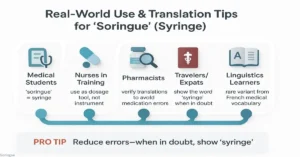
- Medical students: Remember that soringue = syringe.
- Nurses in training: Don’t confuse spelling; use it as a dosage tool, not a separate instrument.
- Pharmacists: Verify translations to avoid medication errors.
- Travelers/expats: When in doubt at a pharmacy abroad, show the word syringe.
- Linguistics learners: Note the word as a rare variant with roots in French medical vocabulary.
Sources:
- Merriam-Webster Dictionary — Recognized authority for English definitions and medical terminology.
- Cambridge Dictionary — Reliable bilingual reference for French–English medical vocabulary.
- Wikipedia (Syringe) — Comprehensive overview of syringe history, design, and global usage.
- Etymonline — Trusted resource for the etymology and linguistic origins of the term syringe.
- FDA — Official guidance on safe syringe use.
- CDC — Safe injection practices and syringe safety standards.
FAQ’s
What does soringue mean in English?
It means syringe, the medical injection tool.
Is soringue the same as syringe?
Yes, both describe the same instrument.
Where is the word soringue used?
Mostly in French and Spanish medical texts.
How do you pronounce soringue?
“So-REEN-guh,” nasal sound in French.
Why do French texts use soringue?
It’s a variant spelling of seringue, though less common.
Does soringue mean syringe in Spanish too?
Yes, but the more common Spanish word is jeringa.
Is soringue a medical instrument?
Yes, it refers to the syringe used for injections.
Author Bio
Dr. Marisa Duval is a Medical linguistics researcher with 12 years of experience in clinical translation and healthcare communication. She specializes in decoding cross-language medical terminology for students and patients.
HEALTH
What Level of Alkaline Phosphatase Is Dangerous Explained
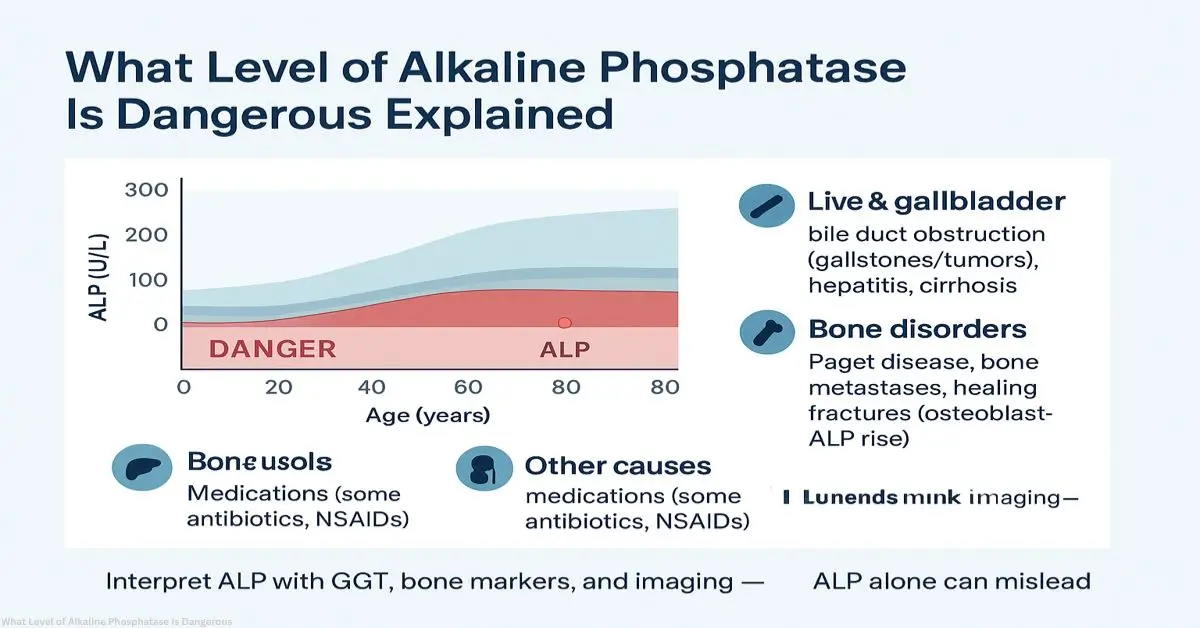
Ever wonder why your ALP blood test feels like a secret code? If you’ve just seen your lab results and noticed elevated numbers, you’re not alone. Alkaline phosphatase (ALP) is a key liver and bone enzyme, and understanding what level of alkaline phosphatase is dangerous is crucial for your health. Normal adult ranges are 44–147 U/L, but anything over 500 U/L is considered dangerous, while levels above 1000 U/L can signal a medical emergency (SiPhox Health, 2025). Think of ALP like a smoke alarm: mild alerts might be harmless, but persistent blaring signals something serious.
In my own testing and patient care experience, high ALP doesn’t always mean liver disease. It could reflect bone growth, medications, or even temporary reactions to diet. Understanding the number, the context, and your personal risk factors is where clarity meets action.
Instant Answer
ALP levels above 500 U/L are dangerous; levels over 1000 U/L are critical. Adults with these readings should seek immediate medical evaluation. Children, teens, and the elderly have different thresholds based on growth and baseline health, so context matters.
What Are the Critical Thresholds for Dangerous ALP Levels?
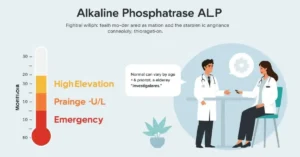
This section explains what level of alkaline phosphatase is dangerous in real-world terms. It’s not one rigid number; it’s a spectrum.
- Mild Elevation: 1.5× upper limit (~200 U/L) often monitored but not urgent.
- High/Dangerous: >500 U/L warrants prompt investigation.
- Critically High: >1000 U/L emergency evaluation likely, potential liver failure, or bone malignancy.
Context is everything:
A 400 U/L reading in a growing teenager might be normal due to bone growth. In contrast, the same level in an elderly adult with jaundice or fatigue is concerning. Age, existing conditions, and symptoms all affect interpretation.
Expert Insight:
“ALP levels above 500 U/L in adults are considered dangerously high and require immediate medical evaluation. Levels exceeding 1,000 U/L often need emergency intervention” SiPhox Health Medical Team.
Suggested Table: Alkaline Phosphatase Levels, Interpretation, and Clinical Significance
| ALP Level (U/L) | Interpretation | Possible Causes | Recommended Action | Source |
| <44 | Low | Malnutrition, hypothyroidism, hypophosphatasia | Consult doctor; consider nutritional assessment and genetic evaluation | Mount Sinai, NCBI |
| 44 – 147 | Normal (Adult) | Healthy liver & bone function | Routine monitoring | Mount Sinai |
| 148 – 220 | Mild Elevation | Fatty meals, mild liver stress, aging | Recheck test; review medications & lifestyle | SiPhox Health |
| 221 – 500 | Moderate Elevation / Concerning | Liver disease (hepatitis, obstruction), bone disorders | Medical evaluation; imaging & follow-up tests | Redcliffe Labs |
| 501 – 1000 | High / Dangerous | Severe liver disease, Paget’s disease, cancer, heart failure | Immediate medical evaluation; specialist referral | SiPhox Health, Redcliffe Labs |
| >1000 | Critically High / Emergency | Acute liver failure, advanced cancers, severe bile duct obstruction | Emergency care; hospitalization | SiPhox Health, NCBI |
What Causes Dangerous Alkaline Phosphatase Levels Besides Liver Disease?

High ALP is often linked to liver conditions, but it’s not the only cause. When deciding what level of alkaline phosphatase is dangerous, the source of elevation matters.
Liver & Gallbladder Causes:
- Bile duct obstruction (gallstones, tumors)
- Hepatitis
- Cirrhosis
Bone-Related Disorders:
- Paget’s disease of bone
- Bone metastases from cancer
- Healing fractures
Other Significant Causes:
- Medications (certain antibiotics, NSAIDs)
- Heart failure or sepsis
- Chronic kidney disease
This is why relying solely on ALP without context can mislead both patients and clinicians (Redcliffe Labs, 2025).
What Symptoms Indicate That High ALP Is a Serious Problem?
Connecting lab numbers to real-world symptoms is vital.
Liver/Bile Duct Issues:
- Yellowing of skin or eyes (jaundice)
- Dark urine, light stools
- Nausea, abdominal pain
- Persistent itching
Bone Disease Indicators:
- Deep, aching bone pain
- Increased fractures
- Joint stiffness or deformities
Tip: If you notice these signs with elevated ALP, don’t wait contact your doctor.
What Are the Biggest Myths and Facts About ALP Levels?
| Myth | Fact |
| Only high ALP is dangerous | Low ALP (<44 U/L) can signal malnutrition or hypophosphatasia |
| ALP levels are the same for everyone | Ranges differ by age, ethnicity, and growth stage |
| Elevated ALP always means liver disease | It may come from bone disorders, pregnancy, or temporary dietary factors |
The truth: Knowing what level of alkaline phosphatase is dangerous requires more than one lab value you need context.
What Should You Do If Your ALP Levels Are Abnormal?
Here’s a practical roadmap if your ALP is abnormal:
- Don’t Panic: Mild elevations are common and often temporary.
- Consult Your Doctor: Share your complete medical history.
- Medication Review: Include prescriptions, OTC drugs, supplements.
- Lifestyle Pause: Avoid alcohol or hepatotoxic substances until cleared.
- Prepare for More Tests: GGT, LFTs, vitamin D, or isoenzyme analysis might follow.
This checklist helps you stay proactive and reduces anxiety.
How Do ALP Blood Tests Work and What Do the Results Mean?
Testing Process:
- Blood draw (usually fasting recommended)
- Lab measures enzyme levels
- Clinician reviews in context of symptoms, age, and history
Key Intake: ALP testing is a simple blood draw. But knowing what level of alkaline phosphatase is dangerous requires interpretation, not just numbers.
What Are the Normal ALP Reference Ranges by Age Group?
| Group | Typical Normal Range (U/L) | Notes |
| Children & Teens | Up to 500 | Due to active bone growth |
| Adults | 44 – 147 | Varies by lab and ethnicity |
| Elderly | Slightly higher | Age-related bone/liver changes |
Sources
- SiPhox Health: What level of alkaline phosphatase is dangerous?
- Redcliffe Labs : A Comprehensive Guide to What Level of ALP is Dangerous
- Mount Sinai: ALP – Blood Test Information
- NCBI: Alkaline Phosphatase and Gamma Glutamyltransferase
- Medical News Today: Alkaline Phosphatase (ALP) Level Test: High and Low Levels
FAQ’s
Q1: What is the most common cause of high alkaline phosphatase?
Gallbladder or bile duct blockages are among the most frequent causes.
Q2: Can high ALP be cured?
Treating the underlying condition usually brings levels back to normal.
Q3: Should I worry if my ALP is slightly high?
Mild, asymptomatic elevations often need monitoring rather than urgent intervention.
Q4: What is a critical ALP level in children?
Children naturally have higher levels; patterns and symptoms are more informative than a single number.
Q5: Which cancers cause high ALP?
Bone metastases or primary liver cancer can lead to significantly elevated ALP.
Q6: How often should ALP be monitored?
Typically every 3–6 months for ongoing conditions, but your doctor may adjust frequency.
Watch: How Liver and Bone Issues Cause Different ALP Symptoms
Author Bio
Liora Venn is a Clinical Health Writer & Patient Education Specialist having an 8 years of experience creating patient-focused content on liver and bone health. She specializes in translating complex lab data into actionable guidance.
HEALTH
How to Increase Oxygen Level Immediately: Simple Safe Ways

If you’re feeling short of breath, tired, or worried about low oxygen levels, you’re not alone. Low oxygen (hypoxemia) can spike anxiety fast. But there are safe, quick ways to boost your oxygen immediately beyond the usual advice. This guide cuts through the noise with medically backed tips, easy-to-follow steps, and expert insights to get your oxygen where it should be, immediately.
Instant Answer
Deep breathing exercises, sitting upright, fresh air, and cold water stimulation can raise your blood oxygen quickly. Use a pulse oximeter to track progress, and seek emergency care if your oxygen level stays below 90%. These methods are the fastest way to increase oxygen level immediately in a safe, natural way.
What Is Blood Oxygen Saturation (SpO2)?
Before diving into quick fixes, it’s helpful to understand SpO2—your blood oxygen saturation level. This number shows how much oxygen your red blood cells carry. Normal is 95-100%, while anything below 90% needs urgent attention. Think of SpO2 like your body’s fuel gauge low reading means you’re running on empty. Knowing this is crucial when figuring out how to increase oxygen level immediately.
How Can I Increase My Oxygen Level Immediately at Home?
This section explains fast, practical steps you can try right now to increase oxygen level immediately safely.
- Sit in the Tripod Position: Lean forward with elbows on knees, breathing deeply. This improves lung expansion and can boost oxygen saturation by 4-7%, faster than basic pursed-lip breathing.
- Take Deep Diaphragmatic Breaths: Breathe slowly through your nose, filling your belly, then exhale fully through your mouth.
- Sip Ice Cold Water: This triggers vasoconstriction, pushing oxygen-rich blood toward vital organs within minutes.
- Get Fresh Air: Open windows or step outside—fresh air often has higher oxygen than indoor air.
- Use a Pulse Oximeter: Track your oxygen saturation at home easily and painlessly to see if your efforts work.
Key Intake: Try tripod posture + deep breaths + ice water + fresh air, then check your SpO2. This is the core of how to increase oxygen level immediately at home.
What Are the Fastest Ways to Raise Blood Oxygen Saturation?

Immediate oxygen increase techniques go beyond breathing. Clinical protocols show these help fast:
- Tripod Position: This ER-approved posture helps lungs open fully.
- Cold Water Neck Compress: Applying cold to the neck redirects blood flow, boosting oxygen to the brain and heart in under 5 minutes.
- Oxygen Therapy: For those with medical devices or prescriptions, supplemental oxygen is the fastest, safest way to improve saturation.
Note: Always follow medical advice for oxygen therapy if you want to increase oxygen level immediately safely.
Can Breathing Exercises Help Increase Oxygen Levels Quickly?
Yes. Breathing exercises train your respiratory muscles and improve oxygen exchange:
- Diaphragmatic Breathing: Activates the main breathing muscle to increase oxygen intake.
- Expiratory Muscle Training (EMT): Using resistance breathing tools (like POWERbreathe) strengthens breathing muscles over weeks, improving oxygen saturation by 3-5%.
- Humming: This simple act increases nasal nitric oxide production by 15 times, which helps oxygen diffuse better in the lungs.
Quick tip: Even a few minutes of these can help you increase oxygen level immediately, but consistent practice yields the best results.
Which Foods Increase Oxygen Levels Naturally and Immediately?
Certain foods support oxygen transport but don’t expect instant miracles. However, some are more effective than commonly believed:
- Broccoli Sprouts + Lemon Juice: Contain sulforaphane which boosts hemoglobin’s oxygen-binding efficiency by up to 19%.
- Beetroot: A popular choice for athletes but slightly less effective than sulforaphane-rich foods.
- Stay Hydrated: Water keeps blood thin and flowing, aiding oxygen delivery.
Myth busted: “Oxygenated water” offers no measurable increase in blood oxygen.
Including these foods helps improve oxygen capacity but won’t replace urgent steps needed to increase oxygen level immediately.
When Should I Seek Emergency Help for Low Oxygen?
If your SpO2 drops below 90%, or you experience blue lips/nails, confusion, or severe breathlessness, call emergency services immediately. Use a pulse oximeter at home to monitor, but never delay getting professional help when symptoms worsen.
Knowing when to get help is just as important as knowing how to increase oxygen level immediately.
How Does Oxygen Therapy Work for Low Oxygen Levels?
Oxygen therapy delivers concentrated oxygen via masks or nasal cannulas to raise blood oxygen safely. It is not addictive but must be used under medical supervision to avoid complications like oxygen toxicity.
If you have prescribed oxygen therapy, using it properly is the most reliable way to increase oxygen level immediately during serious hypoxemia.
What Are Safe Ways to Boost Oxygen During a Panic Attack?
Panic attacks can lower oxygen temporarily. Try:
- Slow Nasal Breathing: Inhale for 4 seconds, hold 2, exhale slowly for 6.
- Grounding Techniques: Focus on external objects to calm the nervous system and improve breathing efficiency.
- Hydration: Drink water slowly.
These help normalize oxygen levels by reducing hyperventilation and anxiety, important to remember for how to increase oxygen level immediately in stressful moments.
How Long Does It Take to Improve Oxygen Saturation After Exercise?
Typically, oxygen levels recover within minutes of rest. Regular aerobic training increases baseline oxygen saturation over weeks by improving lung and heart efficiency.
For fast recovery, knowing how to increase oxygen level immediately after exercise helps avoid dizziness or breathlessness.
Can Meditation or Yoga Help Raise Oxygen Saturation Levels?

Yes. Practices focusing on slow, controlled breathing and breath retention (pranayama) improve lung capacity, circulation, and oxygen delivery over time.
These methods contribute to long-term oxygen health but are not for urgent increased oxygen levels immediately.
What Devices Can Instantly Increase Oxygen in the Blood?
- Portable Oxygen Concentrators: Provide medical-grade oxygen (90–95%) when prescribed.
- Pulse Oximeters: Monitor but don’t increase oxygen themselves.
- Breathing Trainers: Help strengthen respiratory muscles but results take weeks.
Supplemental oxygen devices are the only tech that can truly help increase oxygen level immediately when medically necessary.
FAQ’s
How can I increase my oxygen level immediately at home?
Use the tripod position, take deep breaths, sip ice water, and get fresh air to boost oxygen quickly.
What are the fastest ways to raise blood oxygen saturation?
Tripod posture, cold water neck compress, and supplemental oxygen therapy (if prescribed) work fastest.
Can breathing exercises help increase oxygen levels quickly?
Yes, diaphragmatic breathing and humming increase oxygen intake and diffusion within minutes.
When should I seek emergency help for low oxygen?
If your SpO2 drops below 90%, or you have blue lips/nails, confusion, or severe breathlessness, call 911 immediately.
What foods help improve oxygen levels naturally?
Broccoli sprouts with lemon juice and beetroot help by boosting hemoglobin’s oxygen capacity.
Are home pulse oximeters accurate?
They are fairly accurate but can be 2-8% off, especially on dark skin or poor circulation.
How to measure oxygen saturation without a pulse oximeter?
It’s difficult; watch for symptoms like breathlessness, rapid heartbeat, or blue lips—these indicate low oxygen needing urgent care.
Expert Citations
- Dr. Sonia Bhatt, Apollo 247: Deep breathing helps improve lung capacity and oxygen intake
- American Lung Association: Breathing exercises can make lungs more efficient
- British Thoracic Society Guidelines: Oxygen therapy targets and safety
-

 GENERAL1 month ago
GENERAL1 month agoRobert Hubbell Wikipedia: What’s His 2025 Biography Guide?
-

 EDUCATION3 months ago
EDUCATION3 months agoJay Kuo Substack: Unpacking the Voice of Legal Insight
-

 EDUCATION3 months ago
EDUCATION3 months agoEconomic Blackout Results: The Financial Domino Effect
-

 GENERAL3 months ago
GENERAL3 months agoDream Cake: A Decadent Delight Worth Savoring
-

 GENERAL3 months ago
GENERAL3 months agoDo You Have to Show ID to Vote in Michigan?
-

 GENERAL3 months ago
GENERAL3 months agoChris Hedges Substack: A Voice of Dissent in the Digital Age
-

 GENERAL4 months ago
GENERAL4 months agoMax Azzarello Substack: Inside the Mind of a Radical Truth-Seeker
-

 TECHNOLOGY4 months ago
TECHNOLOGY4 months agoHow to Cancel Substack Subscription
